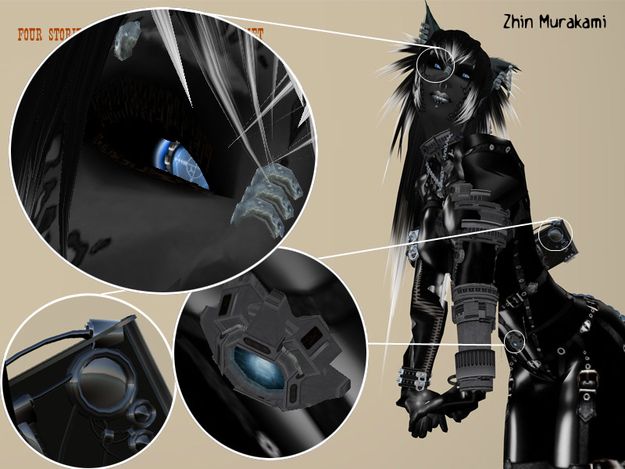That the subject of the evening is highly in demand was not only established by the turnout, but also reinforced in October 2007 when the GATE (Game research for training and entertainment) research project was launched in the Netherlands. Funded for almost 19 million euros, the research project directs specific attention to Playful Identities, the Ludification of Culture and is carried out by, amongst others, Utrecht University, HKU, and Waag Society.
After a brief introduction as to his identity that is a blend of researcher and artist, the key topics of Meadow’s presentation revolved around portraiture, vanity and self-portraits. Second Life Meadows described as street theater. A highly interesting analogy that clarifies that the element of role-playing involved. The self-portrait is an important part of the portrait tradition, but never really about the self. Paradoxically, all (other) portraits are about the self. They tend to reveal the character and identity of the artist. It is a process of reflexivity and identification.
The avatar, which within the context of the presentation was framed as a form of self-portrait, is namely a profile in virtual space. Reformulated, the profile is a two dimensional avatar. When you log onto Hyves, or Facebook for that matter, you access a picture, a name and the “points.” These points are in fact the amount of friends you have collected into you network.
The main interest in snowballing your friend networks has to do with an academic struggle. This struggle is defined by an innate desire to achieve. The “danger” resides in the fact that in these social communities, with their quantitative measurement and what Meadows calls popularity leveraging, we receive the positive reinforcement we sometimes lack in the real world. It is also a matter of vanity as it calls for a huge time-investment. Paradoxically it is this time investment that lures us into a perpetual engagement. Meadows then listed the four key motivations to getting people into the system in the first place: exhibitionism, voyeurism, money and love.
Meadows continues to state that these avatars, these portraits, are no longer only visual, but also interactive. They are chosen fictional representations and operate as a “new” manifestation of body language. Meadows provided several examples of how in his encounters in virtual worlds with other avatars he is often able to deduct a person’s culture from the manner in which the avatar is navigated.
Building on several case studies Meadows demonstrated how intense the experiences of virtual worlds can be and how they penetrate into our everyday life as well. What we do online can be the mimicking of something that is important to us in the real world, and we can practice it in the virtual world, without having to pay for the consequences. The unique quality of the virtual world, furthermore, is that is has the ability to redefine our own sense of reality. What is accepted as being real within this domain is the outcome of a consensus. If all players accept the pixels within the virtual world as a dragon, Meadows stated, we are in fact dealing with a dragon. Whereas games are about rules then, virtual worlds are about roles. This role-playing environment, the contemporary street theater, also has the psychological capacity to change our real lives. We should strive to find a healthy balance between how much time is spent in these two worlds. The moral implications as well as questions as to why people are spending so much time in online environments remains unresolved.
In reference to the works of artists Diego Rodriquez de Silva y Velazquez, Francis Bacon and Joel-Peter Witkin it can be stated that the avatar is nothing new except that now, by media, portraiture is becoming pop. These interactive portraits bear a danger with them as they have a strong emotional force. Meadows perceives the avatar as a psychological prosthetic, an extension theory or as Bolter and Grusin would state "the remediation of self" (2000:285), that grows into and out of us. The fact that we can interact and “touch” these portraits now is even more compound in its experience. The dimension of proximity is evermore important.
The allure of the avatar, just as that of the blog, is this fear of death. It is part of a greater trend of the current Me! Me! Me! going on. These are methods by which we attempt to perceive our experience and share a part of ourselves. It is a means for preservation. Meadows would even go as far as to claim that we are merely at the brink of a long-term design of ourselves as robots (the cyborg self in a Donna Haraway fashion?).
All in all it proved a highly provoking lecture that sparked a self-reflective process. Despite having a Second Life account I never managed to immerse myself in the environment because of the high "entry barrier ". The learning process simply takes too long. And so it is, after an amazing twenty-minute flight within the virtual world, I retreated and have never since logged in. But my social networks and own blogging activities are certainly things to consider. How much time do I spend online and investing in my own social profiles. And an even more pressing question: to what end?
